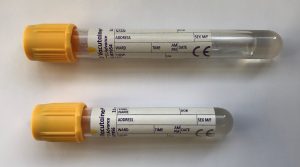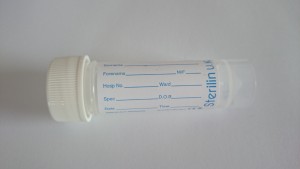Serum or Early Morning Urine


mosmol/kg
Serum 275 – 295 mosmol/kg
Urine 300 – 900 mosmol/Kg
Urine osmolality, which is under the control of pituitary ADH, varies over a wide range to ensure that alterations in fluid intake have little effect on the tightly controlled serum osmolality. Urine osmolality is typically highest on rising in the morning because of the absence of fluid intake during sleep.
An osmolality >600 (especially >800) makes diabetes insipidus unlikely.
An approximate serum osmolality is given by the formula:
osmolality = 2 x Na+ + urea + glucose
If there is a discrepancy between the calculated and measured osmolality. Some other osmotically active species is present in the patient. More often
than not this turns out to be C2H5OH
The normal physiological response to hyponatraemia is the secretion of a dilute urine with osmolality <100. A higher osmolality suggests SIADH.
1 day
Local test
Can be added on to an existing request up to 4 days following sample receipt
Please note this test is not UKAS accredited
Specimen Labelling Procedure